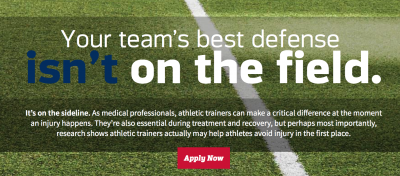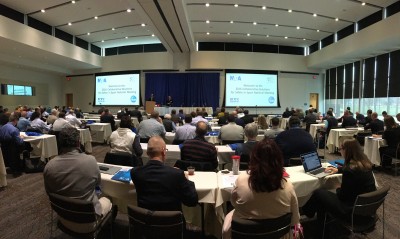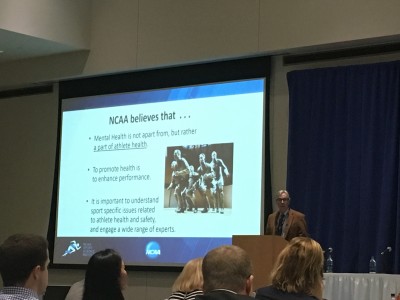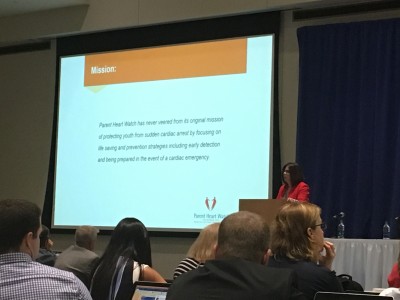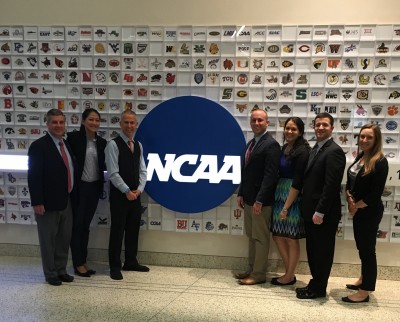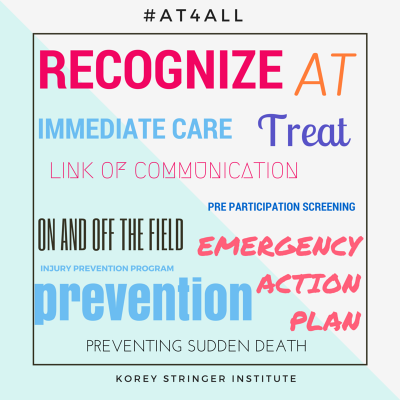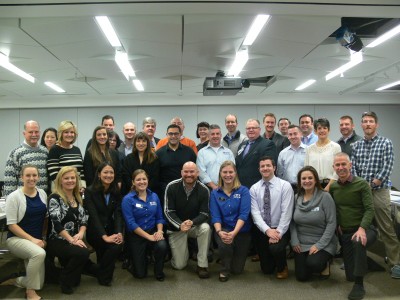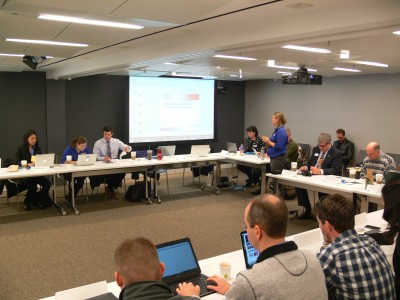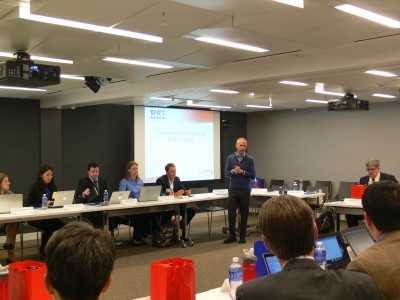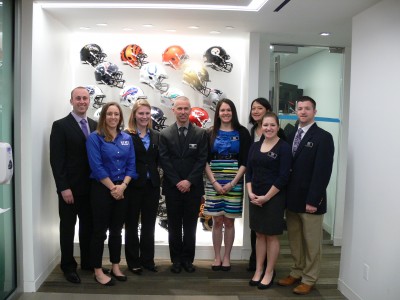Paul A. Peterson MA, LAT, ATC
Athletic Trainer, Woodgrove High School

(May 17, 2018 Virginia)- We are proud to announce that Loudoun County Public Schools has approved an exertional heat stroke (EHS) protocol that includes the use of rectal thermometry. We hope this decision will encourage other secondary school districts in the state of Virginia and throughout the United States, who are having difficulties convincing their administrators the vital importance of rectal thermometry, to continue their pursuit.
In the past, our school district administration was adamantly opposed to approving rectal thermometry. They denied our athletic trainers, on numerous requests, permission to purchase and use rectal thermistors. Ironically, this past fall, one of our student-athlete cross-country runners suffered EHS during a championship meet. The athletic trainers and EMS volunteers immediately assessed the student-athlete’s internal body temperature at 107.7°F via rectal thermometry, placed him in an ice water immersion tub and didn’t transport him to the ER until his internal body temperature dropped to 102°F. Fortunately, the student-athlete was released from the ER later that night with no organ damage and made a full recovery.
By following best practice guidelines in the treatment of EHS, the athletic trainers and EMS volunteers, almost certainly prevented a catastrophic outcome. This incident, once again, brought the need for our school district administration to approve the use of rectal thermometry in the treatment of EHS to the forefront. After an eight-month process to help educate the administration on the vital importance of rectal thermometry, we finally received consent and this policy is now officially part of our EHS protocol.
This policy implementation would not have been possible without the support of several individuals. First and foremost, we had the support of our Athletics Supervisor. Second, we received support and the go ahead from our Health Services’ Supervisors and Director. Third, we received support and further go ahead from our Risk Management Supervisor. Then finally, we received approval from our School Administration Director to include our EHS protocol in the LCPS policies and procedures section of the student-athlete handbook.
The key to our success was a team effort approach. With help and support from many individuals most notably, the LCPS athletic trainers, the orthopedic physicians and staff from The National Sports Medicine Institute (NSMI), the researchers at the Korey Stringer Institute (KSI), Dr. Kevin Miller at Central Michigan University, and Darryl Conway at The University of Michigan, we were finally able to convince our administration to allow the medical professionals in the school system to make the medical decisions and act within published best practices.
With patience and perseverance, the LCPS athletic trainers were able to accomplish the goal of getting an appropriate EHS protocol approved to ensure the future health and safety of LCPS student-athletes who may suffer from EHS.
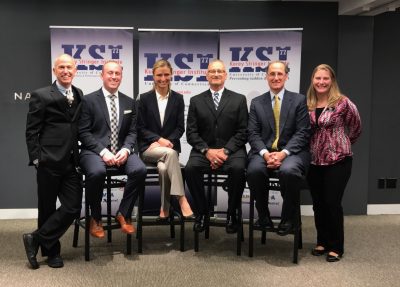
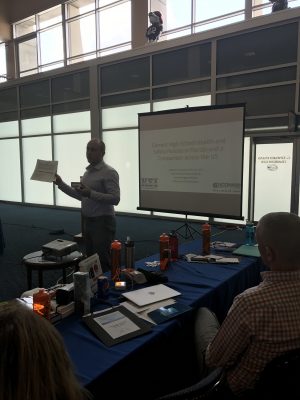
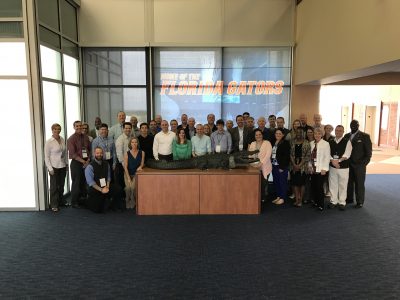
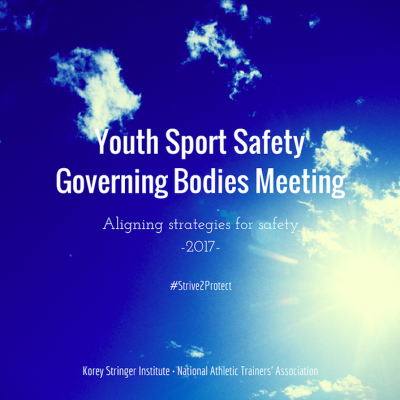 Four years ago, Dr. Casa had a vision to bring together the representatives responsible for safety initiatives for the leading national governing bodies (NGBs) of youth sports and educate them on how to make their sport safer. This past week, the four-year effort concluded with a meeting at the National Athletic Trainers Association (NATA) headquarters in Carrollton, TX. We have accomplished an astonishing amount over the past three years. In 2015, the 1st Youth Sport Safety Governing Bodies (YSSGB) Meeting was convened by the Korey Stringer Institute and hosted by the National Football League in New York, NY. The goal of this inaugural meeting was to educate the NGB attendees on the top causes of sudden death in sport and to learn what various NGBs have done up to this point to improve youth athlete safety. From this meeting, we were able to leave with a better understanding of the inner-workings of the NGBs; we also learned that it was extremely difficult for NGBs to provide any type of mandate or requirement because they do not have a structure to govern and oversee mandates outside of sport rules. From there, we knew we needed to create a document that outlines what the best practice recommendations should be for youth organizations.
Four years ago, Dr. Casa had a vision to bring together the representatives responsible for safety initiatives for the leading national governing bodies (NGBs) of youth sports and educate them on how to make their sport safer. This past week, the four-year effort concluded with a meeting at the National Athletic Trainers Association (NATA) headquarters in Carrollton, TX. We have accomplished an astonishing amount over the past three years. In 2015, the 1st Youth Sport Safety Governing Bodies (YSSGB) Meeting was convened by the Korey Stringer Institute and hosted by the National Football League in New York, NY. The goal of this inaugural meeting was to educate the NGB attendees on the top causes of sudden death in sport and to learn what various NGBs have done up to this point to improve youth athlete safety. From this meeting, we were able to leave with a better understanding of the inner-workings of the NGBs; we also learned that it was extremely difficult for NGBs to provide any type of mandate or requirement because they do not have a structure to govern and oversee mandates outside of sport rules. From there, we knew we needed to create a document that outlines what the best practice recommendations should be for youth organizations.
